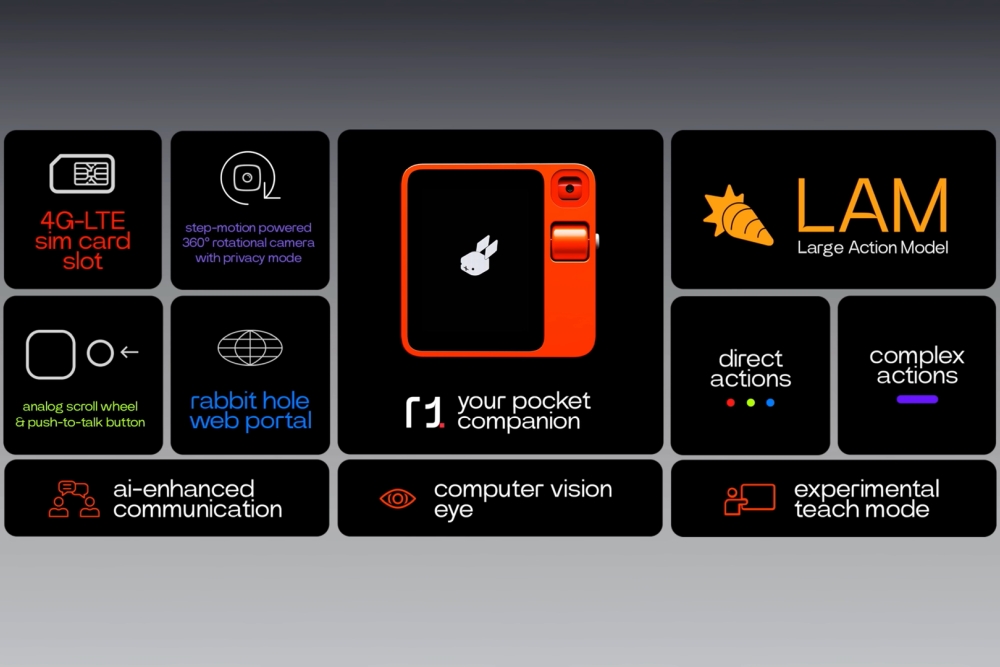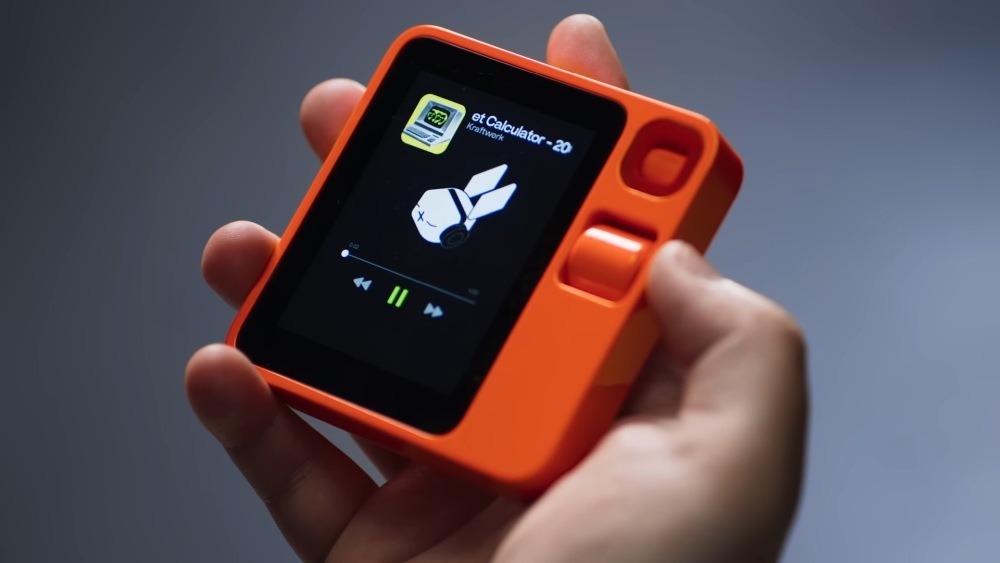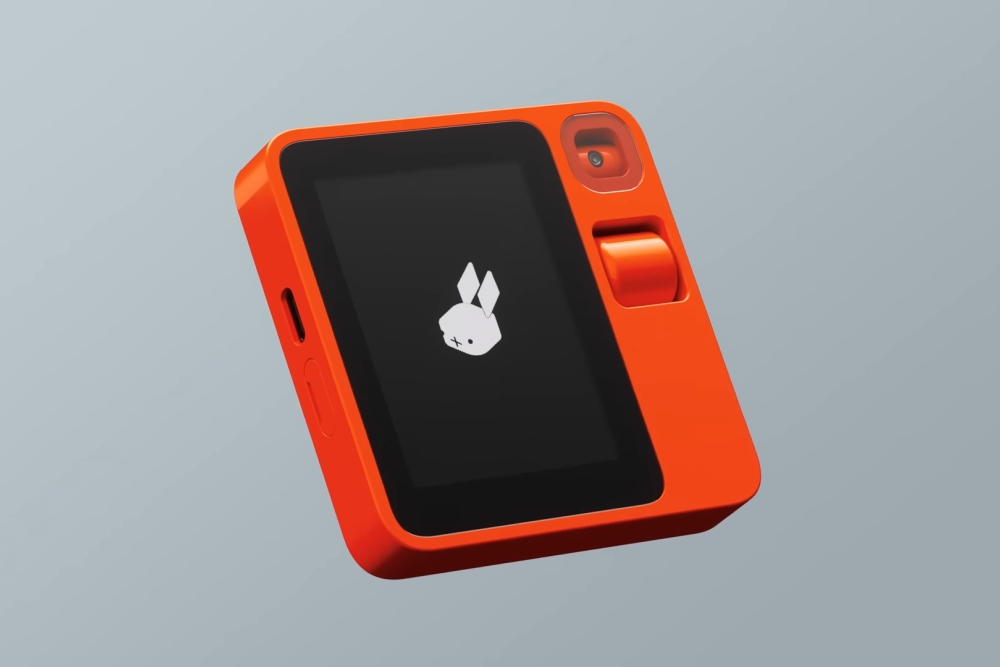Part of the smartphone experience is the use of apps, or if you have well-integrated virtual assistants and apps, then it’s getting the former to use them for you. But what if you have a dedicated virtual assistant device that does all that, and is not encumbered by the aforementioned limitations? That is what the Rabbit R1 is made to do.
Compared to your average phone these days, the Rabbit R1 is pretty small. From the CES 2024 keynote, it looks like you can just about fit it in the palm of your hand. Interacting with the device involves the push-to-talk button, which sidesteps activation commands and the waiting window after that. There’s also a computer vision-enabled rotating camera that can be pointed at you or something you’re looking at. When not in use, it points upwards into the device. Also found on the device is an analogue scroll wheel.

The company that makes the Rabbit R1 is simply known as Rabbit, which also touts the real magic behind the device, AI tech that it calls the Large Action Model, or LAM. Company CEO Jesse Lyu sums it up this way: the LLM understands what you say, but the LAM gets things done”. Which is no doubt a bold claim. But Lyu explains that the LAM is made to understand user interfaces on web pages or apps regardless of platform, and use them as people would.
To make the Rabbit R1 use your apps for you though, you’ll have to sign into the service in question using the device’s The Rabbit Hole web portal. As you’d expect, the company insists that it doesn’t track user activity or collect any user data, and your logins go straight to the service provider. You can also get it to do things that usually involved multiple apps and services, such as planning a trip, which sees it suggesting flights, accommodations and car rentals. For not-so-conventional uses, you can also teach the Rabbit R1 to do things. You can do this by recording your interface interactions for the AI.

As it is claimed as the next step from just understanding language, the Rabbit R1 can also do what most LLM chatbots can. The company claims that it can also respond to your prompts faster than conventional LLMs, but for prompts involving internet searches will still be at the mercy of your internet connection. Regardless of what you get it to do, the virtual assistant in the device is represented by a rabbit – naturally – with animations to reflect what it is doing.
Of course, the controlled demo during the keynote showcases all of this quite perfectly, but it remains to be seen if this sort of smoothness can be replicated in real use. And while the Rabbit R1 does take a SIM card for its internet needs, it is limited to 4G. Then there are other unknowns like battery life, which was not shared.

Ultimately, it does seem like the Rabbit R1 is just packaging, with the real achievement here being the LAM, if it does work as advertised. But if you’re sold on the product – maybe swayed by the cutesy rabbit on the screen – then you’ll be glad to know that it’s not asking too much for it, with a price tag of US$199 (~RM924). And to really drive the point home with the rabbit imagery, it will be available on Easter, which is 31 March. It remains to be seen if it will make its way here though.
(Source: Rabbit [1], [2])
Follow us on Instagram, Facebook, Twitter or Telegram for more updates and breaking news.



